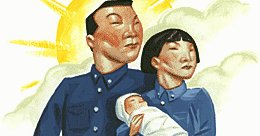The Chinese government developed and implemented the one-child policy in 1979 as a response to concerns about social and economic consequences of continued rapid growth of population. The policy officially limits the number of children to one child per married urban couple, but it allows exemptions which include rural dwellers, ethnic minorities and parents without any siblings themselves. However, the enforcement of the policy resulted in numerous human rights violations like forced abortion, forced sterilization, and even female infanticide. Nonetheless, in 2008, the Pew Research Centre implemented a survey which showed that 76% of the Chinese population supports the policy.
Shanghai’s over-60 population already exceeds three million, or 21.6 per cent of registered residents.
For the first time in 30 years, the authorities of the China’s largest city, Shanghai have launched a campaign which goal is to urge parents, who are themselves only children, to have a second child. The campaign is the result of the city’s growing concerns with the rapid rise of aging population in the city. A spokesman for the Shanghai commission Zhang Meixin emphasized: “Shanghai’s over-60 population already exceeds three million, or 21.6 per cent of registered residents. This is already near the average figure of developed countries and is still rising quickly.” It is expected that by 2020 the proportion of elderly will rise to 34 per cent of the city’s population. Some reports say that similar phenomenon is happening throughout all of China.
Technically, the couples living in Shanghai, and have no siblings, have been allowed to have a second child even before this campaign has started. Nevertheless, the city authorities now have started with home visits and handing over leaflets to promote the benefits of a second child and encourage families to actually have another child.
Currently more than 7300 couples are eligible to have a second child, but many of them decided to have only one child or not to have any children at all. Today’s couples think that children are necessary only to carry on the family name. On the other hand, they fear that the parental responsibilities would only put constraints on a life of leisure.
As soon as Shanghai authorities launched the campaign, numerous speculations started that China will reverse its one-child policy. However, Xie Lingli, director of the Shanghai Population and Family Planning Commission denied such claims and added “the rising number of ageing people will put pressure on the younger generations and society. We need to find ways to solve this problem, but it does not mean the country’s family planning policy will be reversed.”
Experts predict that if China persists with its one-child policy China’s children of today, at the time of marriage in 20 years, face the possibility of taking care of four parents and as many as eight grandparents.

Follow the comments: |
|
